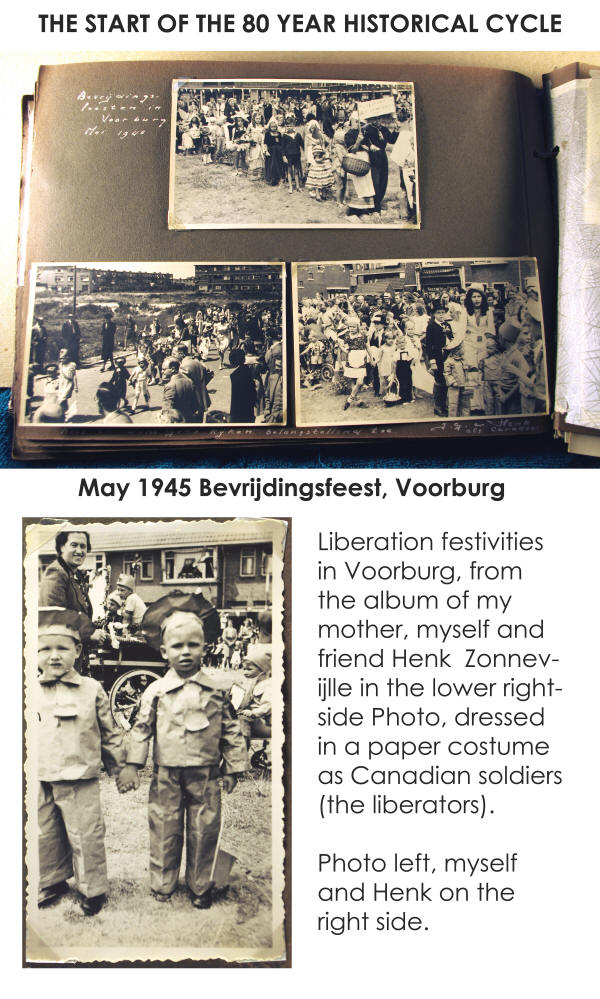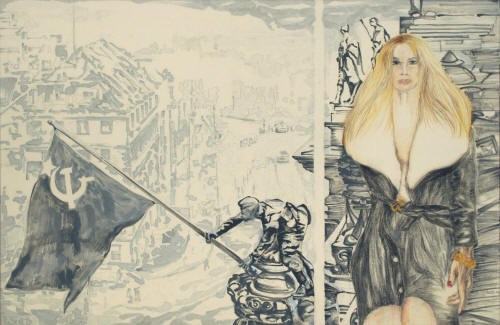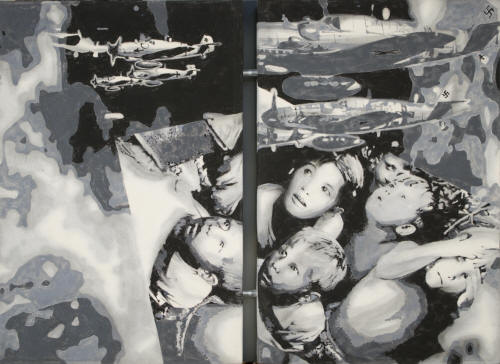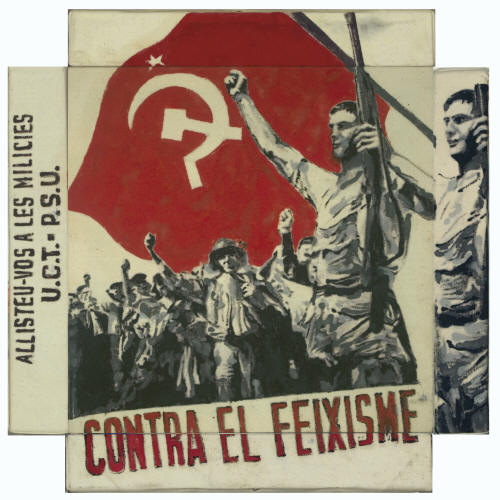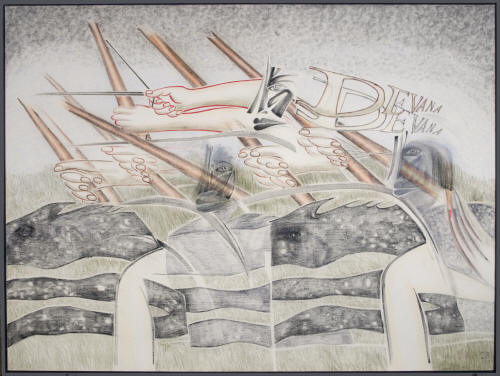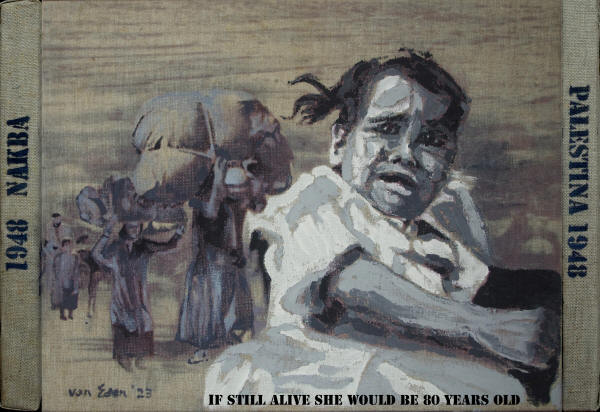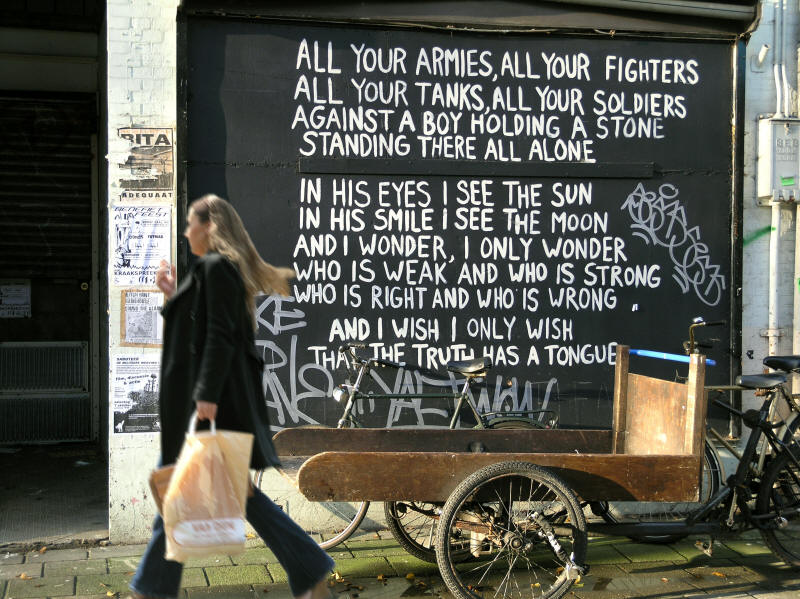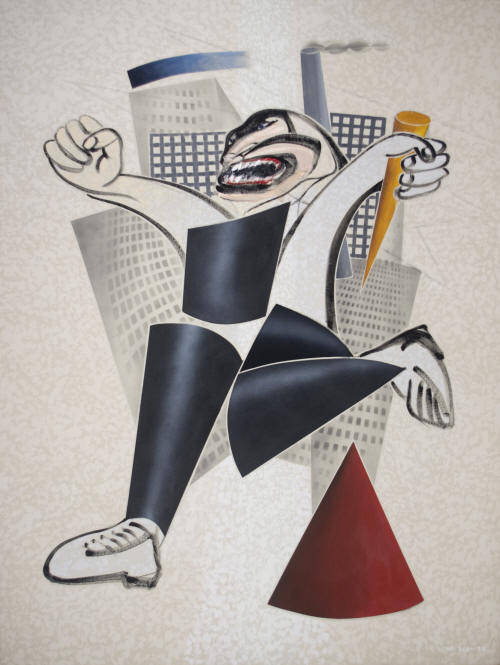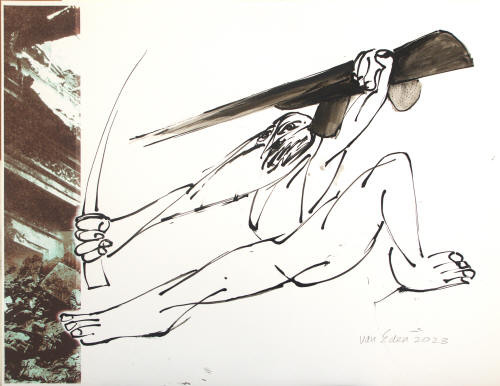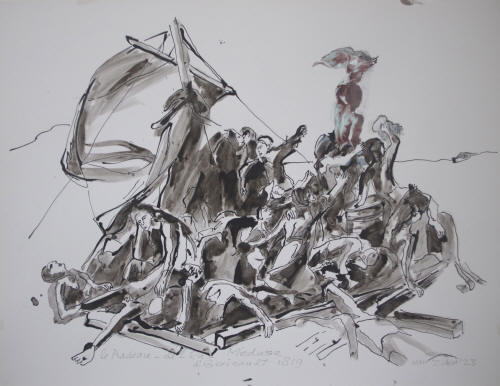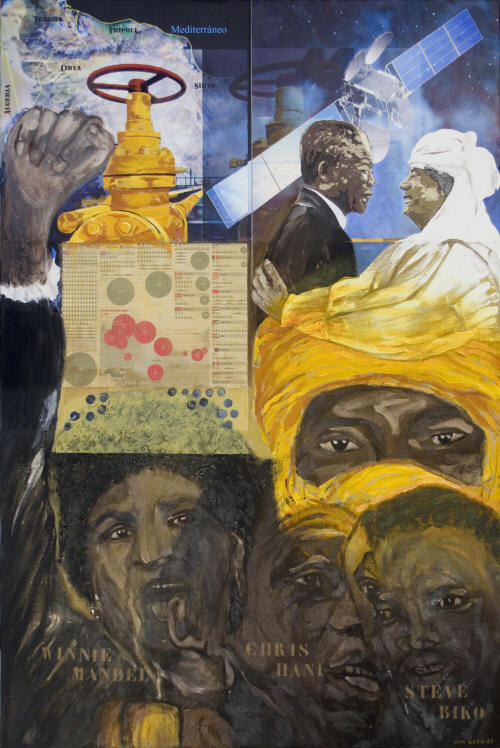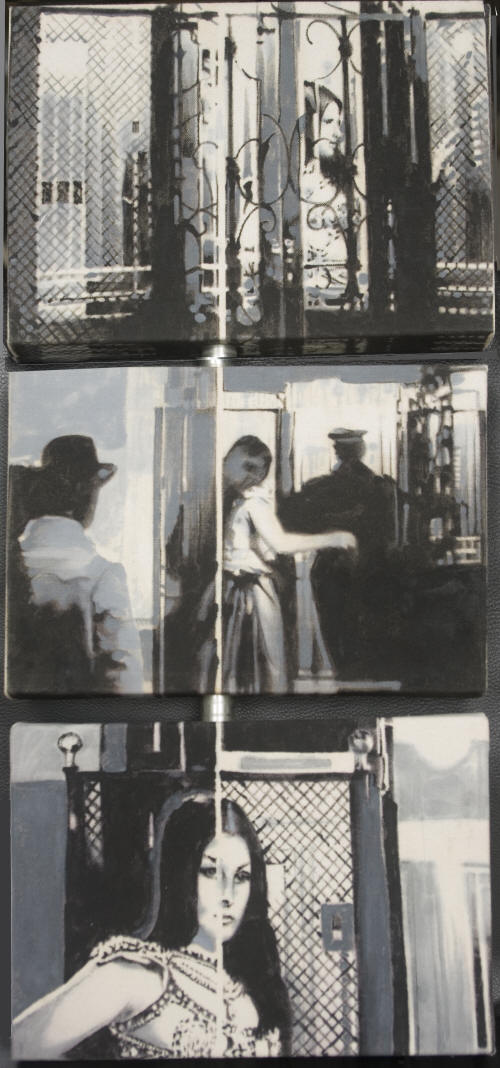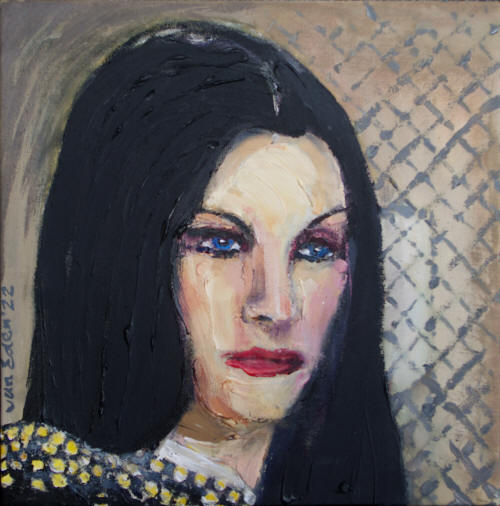____Home_____
Alberto Carrera
Liesbeth Rahder
Herve Martijn
Judith Heinsohn
Jan van Eden
Esther Levigne
Hugo Keizer
Ger Meinema
Jorge Gay Molins
Jean Bilquin
Achnaton Nassar
Philippe Bouttens
Colette Curfs
Milous Heunks
Tomoko Kawachi
Patricia Lippert
Anton Martineau
Tejo Philips
Pol Mara
Victor Pedra
Mapi Rivera
Chiel Vluggen
Marianne Vollmer
Sadik Kwaish
André
de Jong
Maayke Schuitema
Josef Karl
Unni Askeland
Evelyn Jansen
Harry van der Woud
Diego
Pombo
Raymond Boekelder
Manolo Belzunce
Andreas Helfeld
Fundacion vanES
Sabayes-Spain
Jan van Eden
18th November 2023 - 28 January 2024
"80 year historic cycle"
My birth in 1942 was the year that Russia invaded Ukraine on its way to Berlin
and the 2022 invasion woke me up to the idea of the 80 year cycle
with 20 year turnings as in the “Fourth Turning” of Strauss-Howe.
1945 - 1965 HIGH My first turning started in 1945 with the liberation and peace after WW2. It was an upbeat period of rebuilding Europe, rock and roll, space program and the making of the Dutch welfare state. My carefree youth.
1965 – 1984 AWAKENING Martin Luther King in the US, worldwide protests Vietnam war, decolonisation of Africa and Asia. Rolling Stones, sexual liberation. Marriage with Pepa Santolaria in 1969 in Kalulushi (Zambia).
1985 - 2008 UNRAVELLING Industrial disputes, Berlin wall, dissolution of Sovjet Union, 911, Afghanistan. Cuban intervention in Angola resulting in the end of Apartheid in South Africa. We settle in Amsteredam. Ending with financial crisis.
2008 – 2028 CRISIS Growing inequality, housing, climate, pandemic, inflation, wars between great powers and nuclear threat. Death of Pepa in 2015. Birth of artist generation Z , destined to fix and repair the world in the next turning.
Raising the Hammer and Sickle over the Reichstag in Berlin, 2d May 1945
Oil and crayon on cotton, 2022, 120x180 cm, ref 222002
Children hiding from bombing by German planes 1941-1942,
1916, Oil on linen, 60x83x5 cm, ref. 163407Based on photos from Russian Photographer L.I. Konov,
Children watch as their neighborhood is bombed in Minsk, Belorussia.
The bombing was part of Operation Barbarossa. June, 1941.
Contra el Feixisme - 1939, 2022, oil on cotton, 30x30x5 cm, ref. 223402
After a poster of the UCT and PSU of the Spanish civil war 1939
Triple Devana, 2223, Oil and crayon on cotton, 120x180 cm
Ref. 232001
Nakba 1948 - If still alive she would be 80years old,
Oil and acrylic on linen, 40x50x3 cm, ref 233402
Al-Nakba
In 1948, three-quarters of a million Palestinians were forced to leave their land and country; Jewish settlers had managed to assemble a fighting force that used fear and superior military power to expel them from their cities, towns, and villages. By the end of the war, over four hundred villages and towns were destroyed and depopulated and 13.000 people killed. The new state of Israel now controlled about 77 percent of the land area of Mandate Palestine, which had been depopulated of about 90 percent of its indigenous Arab population. After this massive uprooting and the dismemberment and de-Arabization of Palestine, it is no surprise that the Palestinians refer to the events of 1947-48 as the Nakba - the Catastrophe in Arabic.
All your armies, 2017, Olmec Photo Paper 67R24 matt, 59 x 78,67 cm,
Ref. 177002
Urban rebel, 2022, Oil and acrylic on cotton, 200x150 cm,
Ref. 222001
The urge to destroy, 2023, Ink on paper, 50x65 cm
Ref. 235004
Le radeau de la Meduse-Gericault 1819, Ink en collage on paper, 50x65 cm,
Ref. 235001
Le radeau de la Meduse – Gericault 1819
The painting of Théodore Géricault is based on the infamous shipwreck of the French frigate Méduse in July 1816 in the Atlantic Ocean just off the west coast of Africa. The tragic news story of the sinking of a boat tinged with rumors of cannibalism inspired Géricault for the famous painting The Raft of the Medusa. In order to be as close as possible to the truth, he obtained a model of the raft from a survivor and even went so far as to copy from nature the limbs of corpses at the Beaujon Hospital in Paris. On August 25, 1819, the painting measuring 5x7,5 meters, was presented at the Salon in Paris under the title Shipwreck Scene where it aroused much resistance as the work was seen as a political indictment. In London its exhibition attracted a paying public of some 50 000 persons. He died from the consequences of a fall from a horse in 1824. Despite a very short career, Géricault would influence subsequent generations and particularly the young Delacroix.
Eyes on Africa, 2023, Acrylic on printer images on Olmec paper, 180x120 cm
Ref. 232201
Nelson Mandela considered Moammar Gaddafi as hls brother in arms and recognized the decisive contributions of Libyan funds and training of the South African liberation movement the ANC. Mandela visited Gaddafi after his release and under severe criticism from the USA during a time that Libya was under an air and arms embargo by the UN. The picture of a communication satellite reminds us of the Libyan initiative to put the first African-owned Satellite into orbit, bypassing the European space agencies. In the background green circles of the irrigation schemes that were generated by the Libyan government in the largely desert country. Superimposed a cutting from the UK newspaperThe Guardian showing the official statistics of the NATO war-effort in 2011, destroying the "Switzerland" of Africa. The advanced plan for an African development bank and the African Dinar became fatal for Libya. Winnie Madikizela-Mandela (1936-2018), South African anti-apartheid activist and the second wife of Nelson Mandela. The ANC leadership, to clear the path to power, issued Nelson Mandela an ultimatum: 'Winnie or the presidency'. Winnie went as far as describing Mandela as a sellout and the Truth and Reconciliation Commission as a sham acting on behalf of Stratcom (an agency to create false narratives against political enemies setup by the CIA). Chris Hani (1942 - 10 April 1993) from 1967 Political Commissionar in the Zimbabwe People's Revolutionary Army operating out of Zambia. And later head of the armed wing of the ANC and popular communist leader, assassinated on the eve of the first democratie elections in South Africa. Stephen Bantu Biko (1946 - 1977) was a South African anti-apartheid activist, but opposed anti-white racism. Idealogically a socialist, died in police detention in 1977.
Chris Hani – text 1, 2021, HP Designjet print and ink on paper, 50x65 cm,
Ref. 215001Chris Hani (1942-1993)
Hani was born in the Transkei in 1942 as the fifth in a family of six children. At the age of 15 he joined the African National Congress Youth League and studied modern and classical literature at the University of Fort Hare.
In 1961 he was charged under the South African Suppression of Communism Act and held in jail. In 1963, while out on bail pending an appeal, Hani went underground on the advice of the ANC leadership. Hani left South Africa in 1963 for the Soviet Union, and returned in 1967 to Zambia from where he took an active role in the Rhodesian bush war, acting as a Political Commissar in the Zimbabwe People's Revolutionary Army.
[ In the same year 1967, I started my first foreign assignment as a geologist in Zambia. There I had contacts with South African refugees, naturally I was more intimately interested in the girls and I had no idea of their activities in Rhodesia]
In 1974 Hani re-entered South Africa to establish an underground infrastructure for the African National Congres in the Western Cape. By 1982, Hani had become prominent enough in the ANC to be the focus of several assassination attempts.
After the unbanning of ANC and SACP (South African Communist Party) on 2 February 1990 Hani returned to South Africa and became a charismatic and popular speaker in townships. Hani campaigned for the SACP , seeking to redefine its place as a national political party. It was soon doing well - better than the ANC in fact – especially amongst the young who had no real experiences of the pre-Apartheid era and no commitment to the democratic ideals of the more moderate Mandela.
Hani was described as charming, passionate and charismatic, and soon attracted a cult-like following. Hani's SACP would have proved a serious match for the ANC in the 1994 elections. On 10 April 1993, Hani was assassinated by an anti-Communist Polish refugee and strangely a theory based largely on documents given to the Mail & Guardian point to a conspiracy linking the assassination to the ANC.
Fellini's Roma, starring Fiona Florence, 2009, Oil on cotton, 20x30x5 cm,
Ref.093430
Fiona Florence, 2022, Acrylic on cotton, 30x30x4,4 cm (frame 45x45 cm),
Ref.223404
